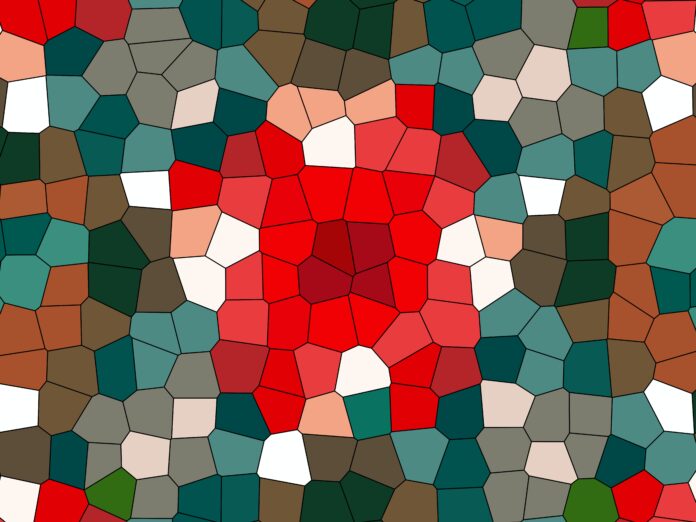Transparent Solar Windows: Merging Sustainability and Functionality
The quest for renewable energy sources and sustainable technologies has led to innovative breakthroughs in various sectors. One such advancement that holds significant promise is the development of transparent solar windows. These windows seamlessly integrate solar energy harvesting with the everyday functionality of windows, redefining the potential of building-integrated photovoltaics (BIPV). Transparent solar windows represent a convergence of aesthetics, energy efficiency, and eco-consciousness, offering a glimpse into the future of sustainable architecture and urban design.
Traditional solar panels have been a staple in the renewable energy landscape, adorning rooftops and open fields. However, their adoption in urban environments, particularly within densely populated cities, has often been hindered by space constraints and aesthetic concerns. Transparent solar windows, on the other hand, present a novel solution to this dilemma. By incorporating photovoltaic technology directly into windows, buildings can generate clean energy without sacrificing natural light, visibility, or architectural aesthetics. This innovation not only paves the way for enhanced energy autonomy but also reduces the carbon footprint of structures by utilizing otherwise underutilized surfaces for energy production.
The science behind transparent solar windows is rooted in photovoltaics, which involves the conversion of sunlight into electricity using semiconducting materials. In this context, transparent solar panels are crafted from materials known as transparent conductive oxides (TCOs) or organic photovoltaic compounds. These materials possess the remarkable ability to absorb and convert light energy while maintaining their transparency. Researchers have diligently worked to improve the efficiency of these materials, allowing for greater energy conversion without compromising the window’s translucency. This delicate balance between transparency and energy generation is at the core of the transparent solar window’s appeal.
The integration of transparent solar panels into windows necessitates a multi-layered approach. Typically, transparent solar windows consist of several thin layers that work synergistically to capture sunlight and convert it into electricity. At the forefront is the transparent conductive oxide layer, which allows light to pass through while facilitating the flow of generated electricity. Beneath this layer lies the active layer, comprised of semiconductor materials that absorb photons and release electrons, initiating the electricity generation process. These layers are sandwiched between protective coatings that safeguard the delicate components from environmental factors, ensuring longevity and performance.
What sets transparent solar windows apart is their versatility. They can be seamlessly incorporated into new construction projects as well as retrofitted onto existing structures, making them a practical option for both urban renewal and sustainable architecture. The ability to harness solar energy without compromising the architectural vision of a building opens up a realm of possibilities for designers and urban planners. Transparent solar windows can be utilized in residential buildings, commercial spaces, skyscrapers, and even transportation hubs. This adaptability transforms windows from passive elements into active contributors to a building’s energy requirements.
The advantages of transparent solar windows extend beyond their energy-generating capabilities. By harnessing sunlight and converting it into electricity, these windows can significantly reduce a building’s reliance on external power sources, consequently lowering utility bills and minimizing strain on conventional energy grids. This aspect is particularly relevant in an era where energy consumption is a critical concern. Moreover, the seamless integration of solar technology into windows enhances the aesthetic appeal of buildings. Architects and designers can now envision structures with expansive glass facades that not only provide panoramic views but also contribute to the building’s energy needs.
The potential applications of transparent solar windows are not limited to stationary structures alone. The transportation sector, including automobiles, buses, trains, and even aircraft, stands to benefit from this innovation. Integrating transparent solar panels into the windows of vehicles could offset a portion of their energy requirements, extending their range and reducing their environmental impact. This concept aligns with the growing emphasis on sustainable transportation and offers a tangible solution for reducing greenhouse gas emissions in the sector.
In conclusion, transparent solar windows represent a remarkable synergy of aesthetics, functionality, and sustainability. By seamlessly blending photovoltaic technology with the transparency of windows, these innovative panels enable buildings to generate clean energy while maintaining their architectural integrity. The development of transparent conductive oxide materials and advanced semiconductor technologies has paved the way for efficient energy conversion without compromising transparency. As urbanization continues to rise and energy consumption escalates, embracing such innovative solutions becomes imperative. Transparent solar windows transcend the conventional role of windows, emerging as active energy generators and symbols of a greener, more sustainable future.
Dual Functionality:
Transparent solar windows serve as both traditional windows and energy generators. They allow natural light to pass through while simultaneously capturing sunlight and converting it into electricity. This dual functionality seamlessly integrates energy production with everyday architectural elements.
Architectural Integration:
These windows are designed to blend harmoniously with architectural aesthetics. They can be incorporated into various building types, including residential, commercial, and public structures, without compromising the visual appeal of the design. This architectural integration facilitates the adoption of sustainable technologies in urban environments.
Clean Energy Generation:
Transparent solar windows contribute to clean energy production by harnessing sunlight and converting it into electricity. This renewable energy source reduces reliance on fossil fuels, minimizes greenhouse gas emissions, and supports a more sustainable energy mix.
Versatility:
Transparent solar windows can be integrated into new constructions or retrofitted onto existing buildings. Their adaptability extends to diverse settings, from urban skyscrapers to transportation systems. This versatility opens up opportunities to implement these windows in various sectors, expanding their impact on energy sustainability.
Reduced Carbon Footprint:
By utilizing otherwise underutilized surface areas for energy generation, transparent solar windows help reduce the carbon footprint of buildings. The ability to generate electricity from windows complements the broader goals of energy-efficient construction and urban development, contributing to a greener future.
The concept of transparent solar windows represents a paradigm shift in sustainable architecture and urban design. It embodies a perfect blend of technological innovation, environmental consciousness, and aesthetic appeal. The journey from conventional windows to these advanced energy-generating panels is a story of scientific exploration, engineering prowess, and a vision for a greener future.
The scientific foundation of transparent solar windows lies in photovoltaics, a field that has evolved over decades to harness the power of sunlight. These windows are a culmination of breakthroughs in materials science and semiconductor technology. Scientists and researchers have grappled with the challenge of developing materials that can effectively absorb sunlight while allowing visible light to pass through. This delicate balance between transparency and energy conversion has been a central pursuit in the development of these windows.
The materials used in transparent solar windows, often referred to as transparent conductive oxides (TCOs) or organic photovoltaic compounds, hold the key to their functionality. TCOs are semiconducting materials that possess a unique property: they are able to conduct electricity while being transparent. This is achieved through careful engineering of the material’s crystal structure, enabling the flow of electrons while minimizing light absorption. These materials are commonly used in various technologies, such as touchscreens and displays, due to their transparency and conductivity.
Organic photovoltaic compounds, on the other hand, introduce a different approach to transparent solar windows. These compounds are based on organic (carbon-based) materials that can efficiently capture sunlight and convert it into electricity. Unlike traditional inorganic photovoltaic materials, organic compounds offer the advantage of flexibility, making them suitable for applications where rigid materials are less feasible. This flexibility opens up possibilities for curved or irregularly shaped windows, expanding the potential applications of transparent solar technology.
The efficiency of transparent solar windows has been a focal point of research and development efforts. While traditional solar panels have higher energy conversion efficiencies, the challenge with transparent panels lies in striking a balance between transparency and energy generation. Researchers have explored techniques such as nanostructuring the materials to enhance light absorption without compromising transparency. Additionally, advancements in nanotechnology have enabled the creation of materials with enhanced light-trapping properties, improving overall efficiency.
The integration of transparent solar panels into windows involves intricate engineering and design considerations. These panels are typically constructed with multiple layers, each serving a specific purpose. The transparent conductive oxide layer, as the outermost layer, allows light to pass through while facilitating the movement of electric current. This layer is designed to maintain transparency while providing the necessary conductivity for energy flow.
Beneath the conductive layer lies the active layer, which contains the semiconductor materials responsible for energy conversion. These materials absorb photons from sunlight, exciting electrons and creating an electric current. The design of this active layer is crucial, as it dictates the efficiency of energy conversion. Researchers continually explore new semiconductor materials and structures to optimize energy capture and electron movement.
Protective coatings play an essential role in the durability and longevity of transparent solar windows. These coatings shield the delicate layers of the panel from environmental factors such as moisture, dust, and UV radiation. Without effective protection, the performance and lifespan of the windows could be compromised, leading to reduced energy generation and potential damage to the underlying materials.
Beyond the technical aspects, transparent solar windows have ignited a wave of creativity among architects and designers. These windows challenge the notion that solar technology must be utilitarian and visually obtrusive. Instead, they inspire designs that emphasize the harmony between human-made structures and the natural environment. Imagine skyscrapers adorned with expansive glass facades that not only offer breathtaking views but also contribute to the building’s energy needs. This integration of technology and artistry ushers in a new era of sustainable urban landscapes.
The adoption of transparent solar windows aligns with global efforts to transition towards more sustainable energy sources. As the world grapples with the consequences of climate change and resource depletion, innovations like these windows offer a glimmer of hope. Buildings, which are responsible for a significant portion of energy consumption and greenhouse gas emissions, can transform from energy consumers to energy producers. This shift is pivotal in reducing the strain on conventional energy grids and moving towards a decentralized energy generation model.
Furthermore, transparent solar windows resonate with the growing emphasis on energy resilience and security. By generating electricity on-site, buildings become less susceptible to power outages and disruptions. This aspect is particularly relevant in regions prone to extreme weather events, where maintaining a reliable energy supply is paramount for public safety and well-being.
The journey from laboratory prototypes to widespread adoption of transparent solar windows is not without its challenges. Economic viability, scalability of production, and integration into existing infrastructure are among the factors that influence the pace of adoption. However, the trajectory is promising, as advancements in materials science, manufacturing processes, and energy policy create an enabling environment for these windows to thrive.
In conclusion, transparent solar windows symbolize the marriage of innovation and sustainability. They encapsulate the ingenuity of scientists, the creativity of designers, and the aspirations of a world seeking cleaner and more efficient energy solutions. As these windows become an integral part of the urban landscape, they stand as a testament to human capability and the potential for technology to shape a brighter, greener future.


















